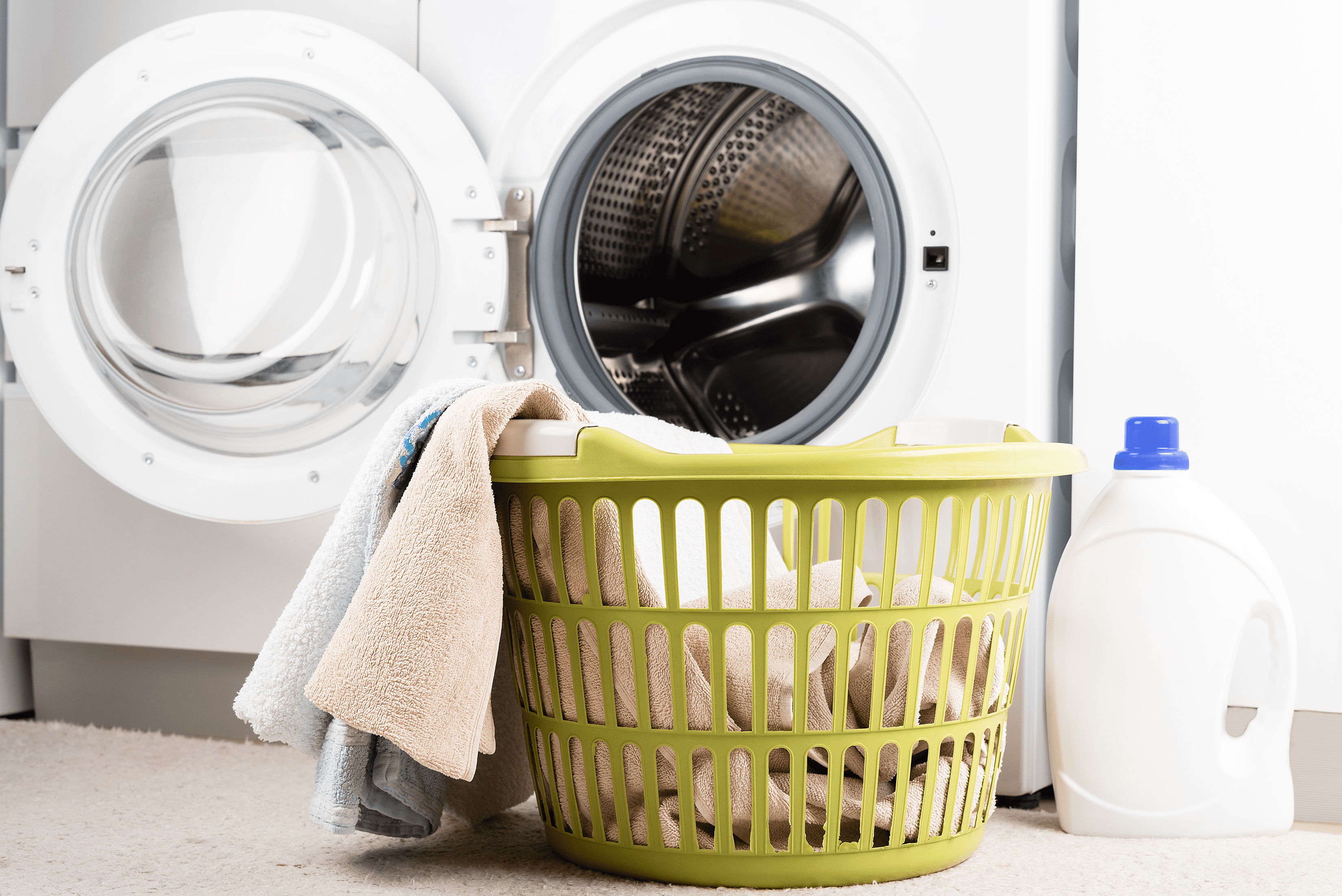
5 Harmful Ingredients You Should Avoid in Your Laundry Detergents
Key Takeaways
- Some common laundry detergent ingredients can be harmful for both people and the environment.
- Ingredients to avoid include dyes, phosphates, and optical brighteners.
- Look for Green Seal or USDA Organic certifications, as these detergents often have cleaner ingredients.
With hundreds of laundry detergents on the market, it can be hard to pinpoint which option is the safest and most effective for your lifestyle. Whether you reach for liquids, pods, or sheets, most laundry detergents have a long list of ingredients. And in addition to the complicated names of ingredients, there’s no shortage of clever marketing tactics the promise ‘advanced stain-fighting power’ or ‘extra softening’ properties—which can make it even harder to tell what’s safe, or even necessary.
Navigating the chemical overload can be a draining process. But, Zach Pozniak, chief operating officer of Jeeves NY and co-author of The Laundry Book, is here to clear the confusion. Pozniak tells us which ingredients to avoid (and why), along with quick tips to make shopping for safe laundry detergents easier.
5 Common Harmful Ingredients in Traditional Laundry Detergents
Pozniak highlights five key ingredients that are commonly found in laundry detergents—and explains why it’s best to steer clear of them.
1. Fragrances
This ingredient can be a tricky one to navigate, because the term “fragrance” (which may also be listed as “parfum”) on a product label isn’t actually just one ingredient—it can be a catch-all for many different chemicals, all used to craft a laundry detergent’s scent. And because fragrances can be considered trade secrets, your laundry detergent company isn’t mandated to disclose what’s inside their fragrance blends.
With this process, Pozniak explains these ingredients can easily cause skin or respiratory irritations and allergic reactions, especially for sensitive individuals. “It’s advisable to opt for ‘free and clear’ products that do not contain dyes or fragrances if you experience skin issues,” he adds.
2. Dyes
“Similar to fragrances, synthetic dyes can also lead to skin irritation,” Pozniak says. Plus, he says they’re usually unnecessary for cleaning effectiveness, making this one ingredient you can easily skip without hesitation. Often, these colors are only added to laundry detergent to make the product more appealing to consumers without any other major benefit. So if you’re looking to avoid dyes, your safest best is to gather “dye-free” or “hypoallergenic” brands instead.
3. Phosphates
Phosphates are another ingredients to be cautious of, advises Pozniak. Because although they help in cleaning, phosphates contribute to environmental pollution through a process called eutrophication (where excess nutrients causes algae overgrowth, reducing oxygen levels), harming aquatic life. And although phosphates help break down grease and dirt, their environmental impact outweighs their benefits—especially since natural alternatives to this mechanism are now readily available on the market.
4. Optical Brighteners
According to Pozniak, optical brighteners can also cause skin irritation and lead to negative environmental outcomes. Because these brighteners are not biodegradable, they can accumulate in water systems, also harming aquatic life similar to phosphates. And, these brightens don’t actually make your clothes cleaner. Instead, their mode of action is to just make fabrics appear brighter and whiter by absorbing UV light (and re-emitting it as visible blue light).
5. 1,4-Dioxane
“This is another harmful chemical that has been identified as a probable carcinogen by the Environmental Protection Agency (EPA),” Pozniak says. 1,4-Dioxane is a byproduct of the manufacturing process for certain surfactants used in laundry detergents and other cleaning products, and is associated with several negative impacts.
“1,4-Dioxane’s presence in household products raises concerns about long-term [health and environmental] exposure, especially as it can enter the groundwater from wastewater,” Pozniak says. Because of this, certain states like New York have banned the ingredient or placed strict limits on its use. “Products containing this chemical must comply with strict limits, specifically below 2 parts per million for personal and cleaning products,” Pozniak says.
How to Read Laundry Detergent Labels to Identify Safe and Eco-Friendly Options
Pozniak says if you aren’t sure what you’re looking for, choosing a detergent can be confusing. “The only real thing to look for is the EPA Safer Choice label which indicates a product has been evaluated and meets stringent criteria for safety and environmental impact,” he says. In addition, if you want to make shopping for a safer laundry detergent easier, research its labels and certifications online ahead of time.
Certifications to Consider
- Green Seal: This indicates the product meets environmental standards.
- Cradle to Cradle Certified: This signals that the product is made sustainably.
- Leaping Bunny or Cruelty-Free: These labels means no animal testing was involved in the product manufacturing.
- USDA Organic: This certification ensures the product is made of at least 95% organic ingredients.
- Zero Waste Certified: This label means the product guarantees little- to no-waste production.
Additional Ways to Shop Safely
- Opt for natural ingredients when possible: Consider choosing detergents made from plant-based, biodegradable ingredients. Examples include sodium bicarbonate, 100% pure essential oils, and coconut-derived surfactants.
- Avoid detergents with long lists of synthetic chemicals: Shorter ingredient lists usually tend to indicate fewer additives and a more green formula.
- Favor eco-conscious packaging: Concentrated formulas (which reduce waste) and recyclable or post-consumer recycled packaging are smart choices.
- Skip chlorine bleach: Choose oxygen bleach or non-toxic stain remover alternatives to chlorine bleach.
- Do your research: Stay informed about ingredient safety issues and continue educate yourself on product labels.










